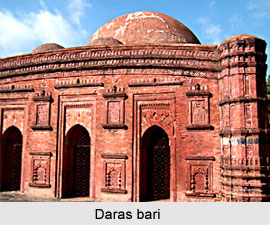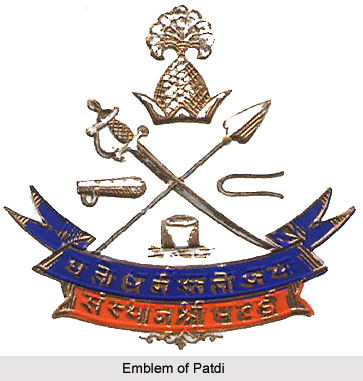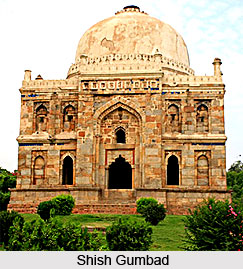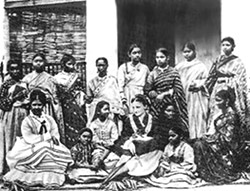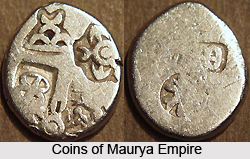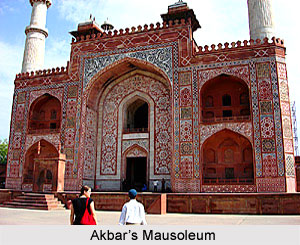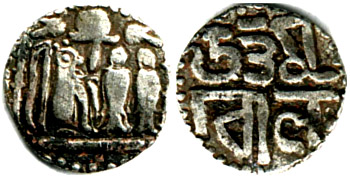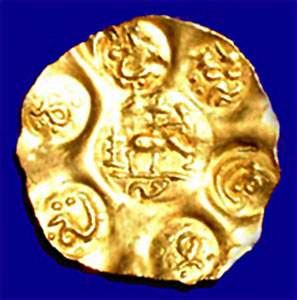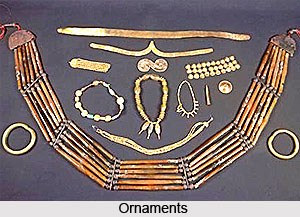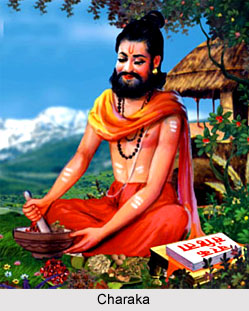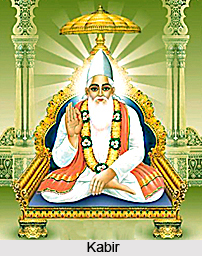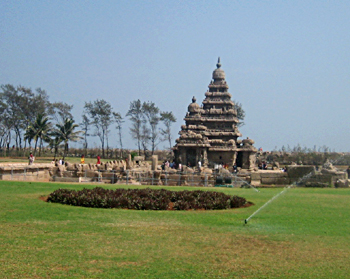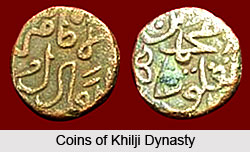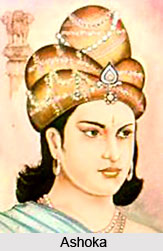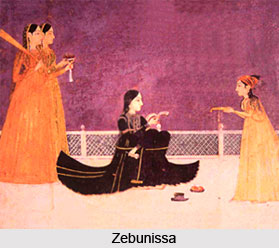 Early life of Zebunissa was spent in much happiness and comfort. Zebunissa, the eldest daughter of the Mughal Emperor Aurangzeb, was born on 15 February 1638. She had royalty on both sides of her family, her mother belonging to the Royal family of Perisa and her father a mighty Mughal. Zebunissa therefore grew up as a princess, much loved and amidst the greatest comfort and luxury. Nine months after the grand wedding ceremony of Aurangzeb and Dilras Begum, the princess Zebunissa was born in the heart of the formidable and archaic fortress of Daulatabad. After birth, Zebunissa was entrusted to a wet-nurse, Mian Bai, chosen by the wives of the court officials, according to custom. She was very devoted to Zebunissa, and after her death the Princess had an magnificent tomb built in her memory.
Early life of Zebunissa was spent in much happiness and comfort. Zebunissa, the eldest daughter of the Mughal Emperor Aurangzeb, was born on 15 February 1638. She had royalty on both sides of her family, her mother belonging to the Royal family of Perisa and her father a mighty Mughal. Zebunissa therefore grew up as a princess, much loved and amidst the greatest comfort and luxury. Nine months after the grand wedding ceremony of Aurangzeb and Dilras Begum, the princess Zebunissa was born in the heart of the formidable and archaic fortress of Daulatabad. After birth, Zebunissa was entrusted to a wet-nurse, Mian Bai, chosen by the wives of the court officials, according to custom. She was very devoted to Zebunissa, and after her death the Princess had an magnificent tomb built in her memory.
The very name chosen for the princess reflects the love and affection the Emperor had for his daughter. Zebunissa means the ornament of womankind. The early days of the princess were spent with her many half brothers and sisters and cousins. Most of these children passed their childhood among the steep defiles and parapets of that fortress in the Deccan, surrounded by armed guards. It is likely that here Zebunissa played with toy swords with her half-brothers, thus acquiring the prowess in martial arts with which she is credited. It may be noted here that this was not an unusual feature. Some Mughal women were quite warlike. Zebunissa`s first cousin, Jani Begum, Dara Shikoh`s daughter, is known to have accompanied her husband, Azam, to the battlefield, and to have fought in the siege of Bijapur.
As they grew, the temptation to see the outside world was great. They had seen only distant visions from their fortified enclosure on the top of the rock. From up there they could view far-away villages looking tiny and toy-like, and behold the surrounding wild hills with white limestone arches carved into mysterious grottoes. At least once, Zebunissa obtained permission to accompany her father in a palanquin when he went to visit the site of the new capital which he was building and later named after himself, Aurangabad. There she followed him while he surveyed the building of his future palace, a mosque, and the ramparts which would later surround the city to protect it from the Marathas. She was an impressionable and precocious little girl. She saw the old Hindu temples being destroyed and must have contemplated the strange idols lying in the dust. Later she describes these in her books- dancing deities with a hundred arms, another with an elephant`s head, the strange blue Lord Krishna.
Zebunissa grew up amidst great splendour and luxury. Her education was one of the finest and comparable to that received by a prince. The emperor made no distinction in the education he imparted to his sons and daughters, and greatly encouraged Zebusnissa when she displayed a great desire for knowledge and learning. She was an avid reader and spent much of her time with books and in the pursuit of education. She had also learnt the teachings of the Holy Quran at a very early age. Thus from her early days, she led a very unrestricted and carefree life and was allowed to fully develop her mental and intellectual faculties which became the source of her sustenance in later life.


